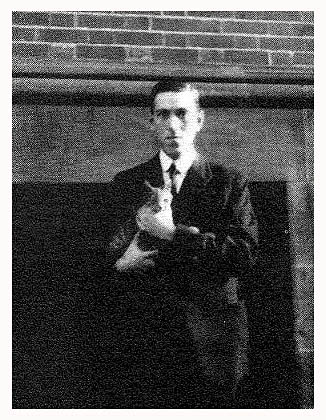H.P. Lovecraft, a pivotal figure in the horror genre, is well-known for his works that delve into cosmic horror and the unknown. However, his personal life and attitudes, particularly regarding race, have also come under scrutiny. One notable aspect of his personal life is the name he gave to his childhood cat, which has sparked considerable discussion and controversy.
The Name of Lovecraft Cat
Lovecraft named his cat “Nigger Man,” a name that reflects both the racial attitudes of his time and his family’s views. This name was likely given when Lovecraft was around nine years old. While it is unclear who exactly named the cat, it is evident that Lovecraft had a fondness for the pet, which he later referenced in his fiction, particularly in the story “The Rats in the Walls”.
Context and Implications
The name “Nigger Man” is emblematic of Lovecraft’s deeply ingrained racism. It was not uncommon during the late 19th and early 20th centuries for individuals to use racially charged names for pets, reflecting societal norms of that era. Lovecraft’s family background played a significant role in shaping these attitudes; they were part of a society that often viewed race through a lens of superiority and prejudice.Lovecraft’s relationship with his cat was affectionate, as evidenced by his letters where he reminisced about “Nigger Man” fondly. He described the cat as a “glorious and purring reality,” indicating that despite the name’s offensive nature, Lovecraft held genuine affection for the animal.
H.P. Lovecraft: A Brief Biography
Early Life
H.P. Lovecraft was born on August 20, 1890, in Providence, Rhode Island. His early life was marked by tragedy; his father was institutionalized when Lovecraft was just three years old, and his mother suffered from mental health issues. Lovecraft was raised by his maternal grandparents, who instilled in him a love for literature and the classics.
Education and Influences
Lovecraft showed prodigious talent in writing from an early age but faced challenges in school due to health issues. He was particularly influenced by authors such as Edgar Allan Poe, Arthur Machen, and Ambrose Bierce. These influences shaped his unique style that combined elements of horror with cosmic themes.
Literary Career
Lovecraft began publishing stories in pulp magazines in the 1920s. His most notable works include:
- “The Call of Cthulhu”: Introduced the Cthulhu Mythos, a shared fictional universe that has inspired countless writers and filmmakers.
- “At the Mountains of Madness”: A novella that explores the discovery of ancient alien civilizations in Antarctica.
- “The Shadow over Innsmouth”: A tale that delves into themes of isolation and degeneration.
Themes in Lovecraft’s Work
Lovecraft’s writing often explores themes of cosmic horror, existential dread, and humanity’s insignificance in the universe. He frequently employed a first-person narrative style that immersed readers in the psychological terror experienced by his characters.
Cosmic Horror
Cosmic horror is a central theme in Lovecraft’s work, emphasizing the insignificance of humanity against the vastness of the cosmos. This theme is often illustrated through encounters with ancient beings or entities beyond human comprehension.
Fear of the Unknown
Lovecraft’s stories often evoke a profound fear of the unknown—whether it be ancient gods, forbidden knowledge, or alien civilizations. This fear resonates with readers on a psychological level, tapping into primal instincts.
FAQ Section
Why did H.P. Lovecraft name his cat that?
Lovecraft named his cat “Nigger Man” likely due to the racial attitudes prevalent during his upbringing. The name was reflective of societal norms at the time, where such terms were commonly used without the awareness of their offensive nature.
Was this name unique to Lovecraft?
No, naming pets with racially charged terms was not uncommon in early 20th-century America. Many people used similar names for animals, plants, and even geographical features.
How did Lovecraft feel about his cat?
Lovecraft expressed fondness for his cat in various letters throughout his life. He remembered it as a cherished companion, despite the controversial name.
What impact has this had on Lovecraft’s legacy?
The name of Lovecraft’s cat has become a focal point in discussions about his racist views. It raises questions about how to reconcile an appreciation for his literary contributions with an understanding of his personal beliefs.
Summary Table
| Aspect | Details |
|---|---|
| Cat’s Name | Nigger Man |
| Lovecraft’s Age | Approximately 9 years old when named |
| Context | Reflective of societal norms of early 20th-century America |
| Affection | Lovecraft expressed fond memories of the cat in letters |
| Literary Reference | Mentioned in “The Rats in the Walls” |
| Racial Attitudes | Indicative of Lovecraft’s broader racist views and family background |
For further information on H.P. Lovecraft and related topics, you can refer to Wikipedia.This exploration into H.P. Lovecraft’s naming of his cat reveals not only personal affection but also highlights a complex intersection of literature and social attitudes regarding race during his lifetime.






More Stories
Where to Watch USMNT vs Jamaica National Football Team
How I Met My Monster
How Should a Ring Fit